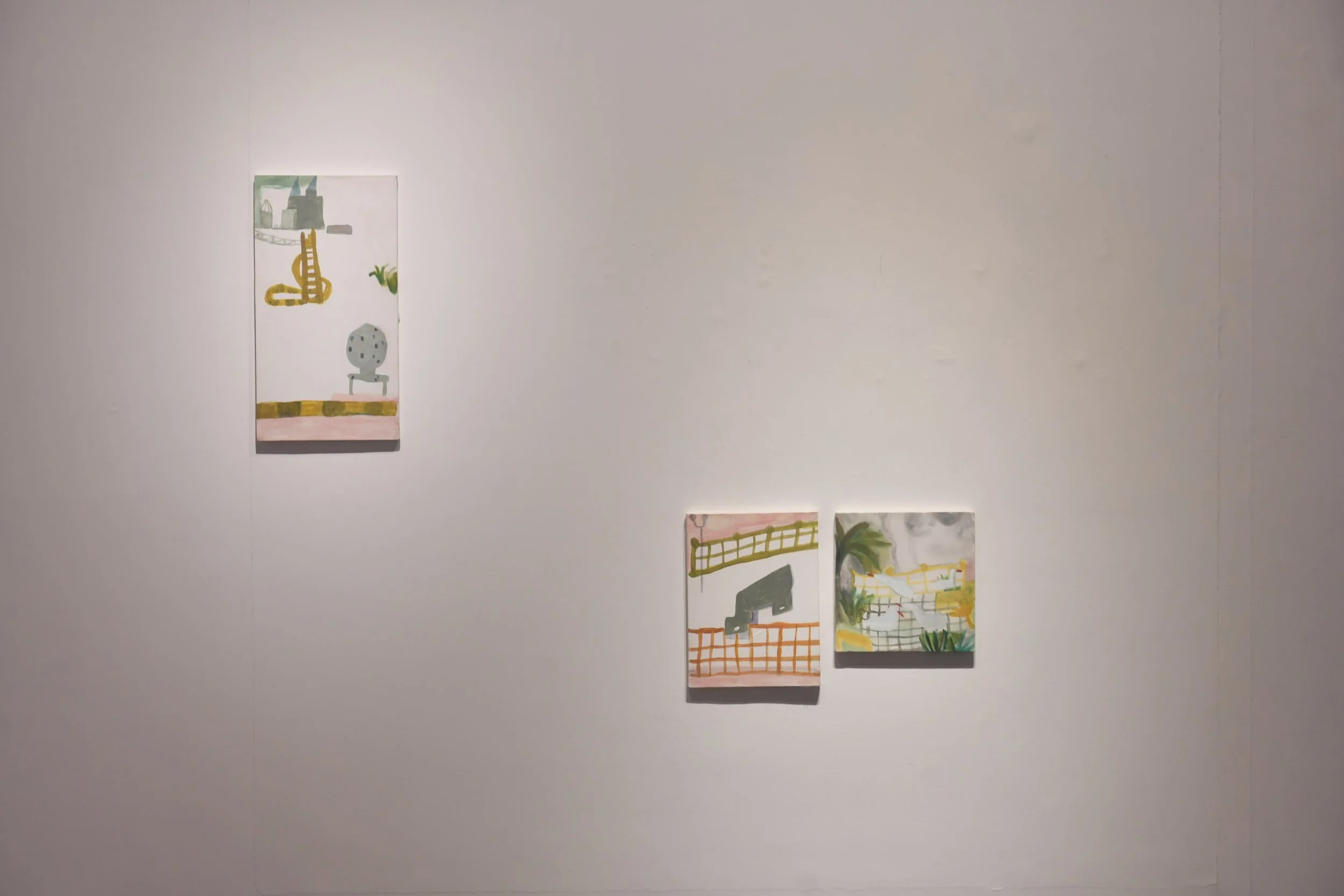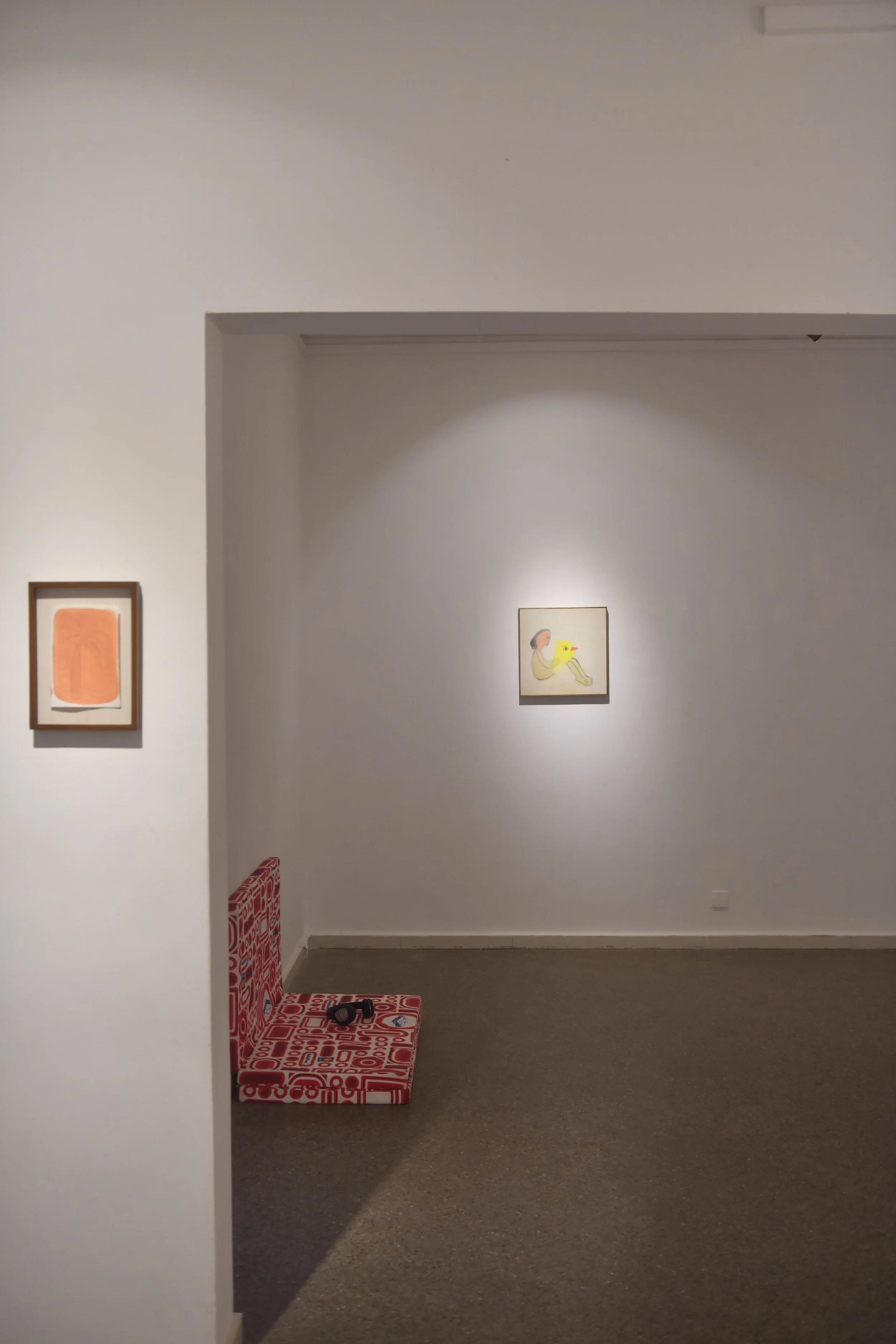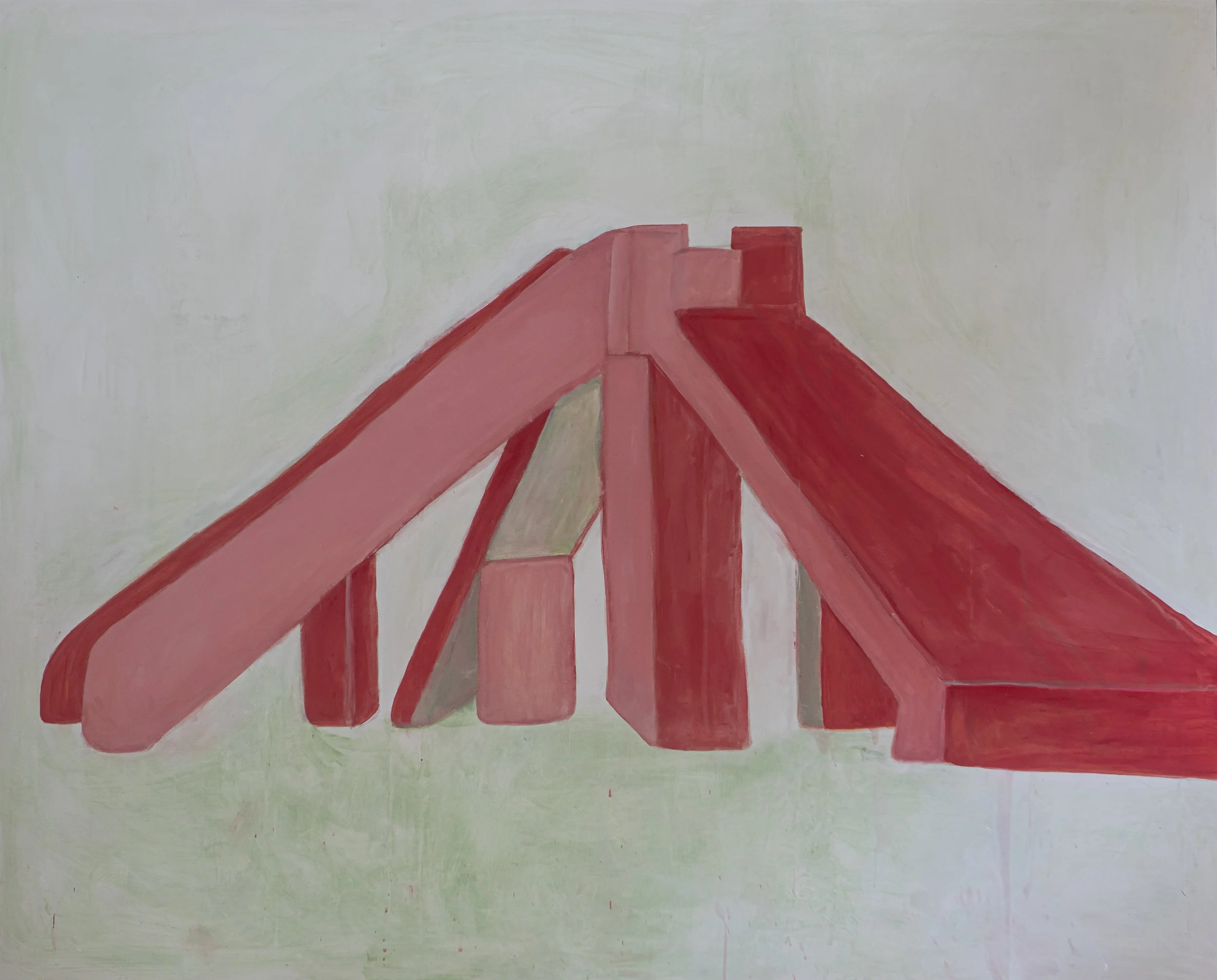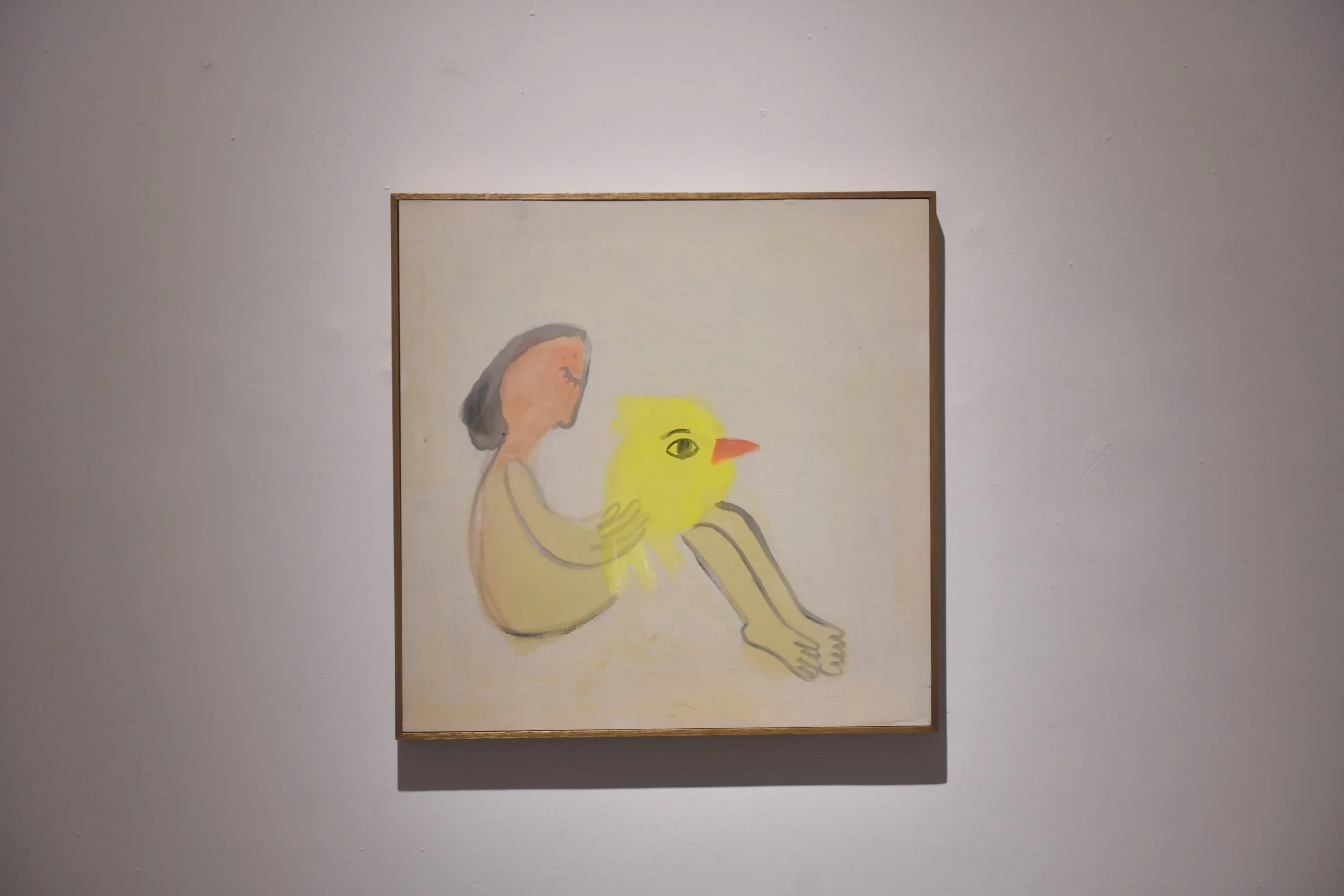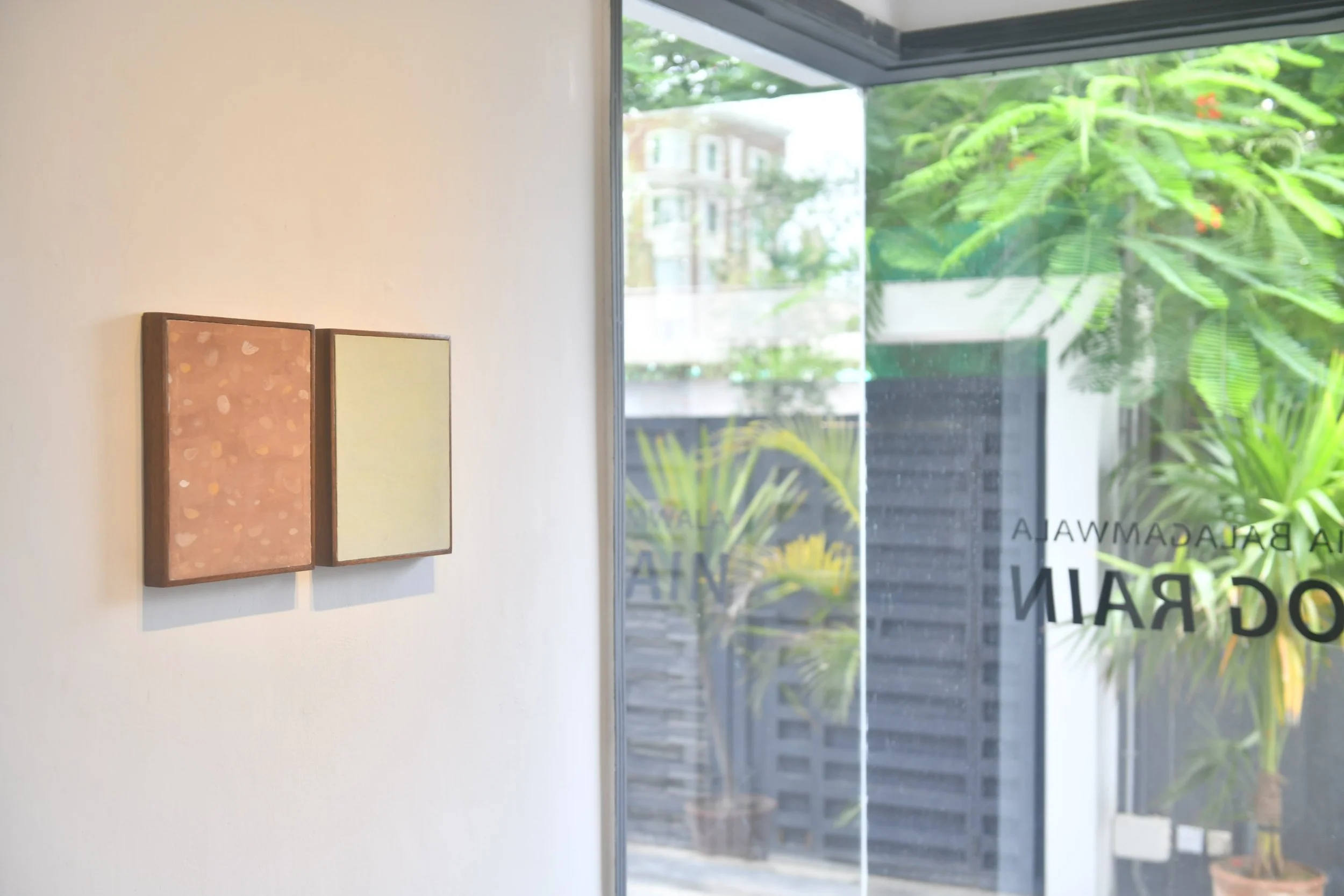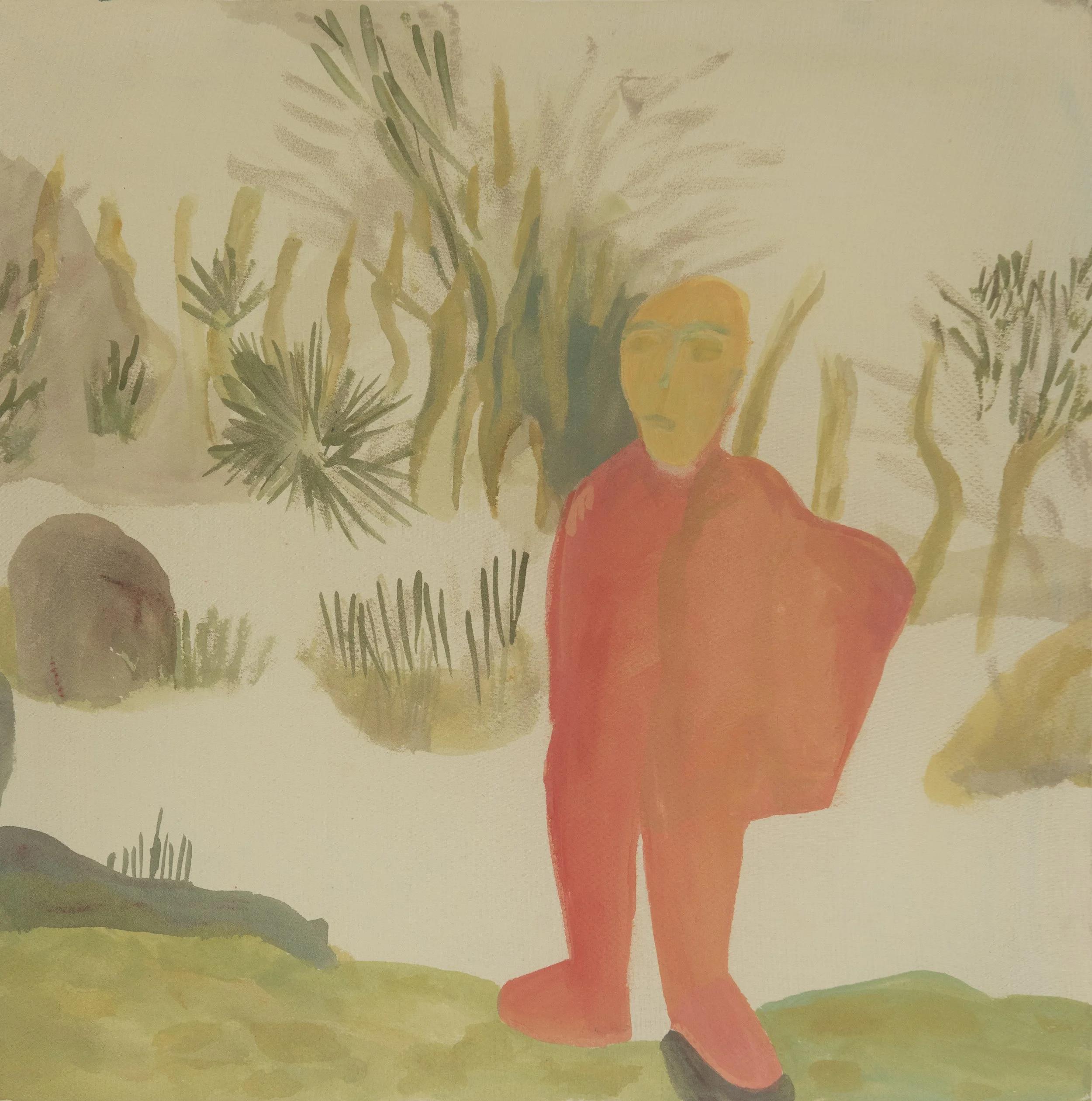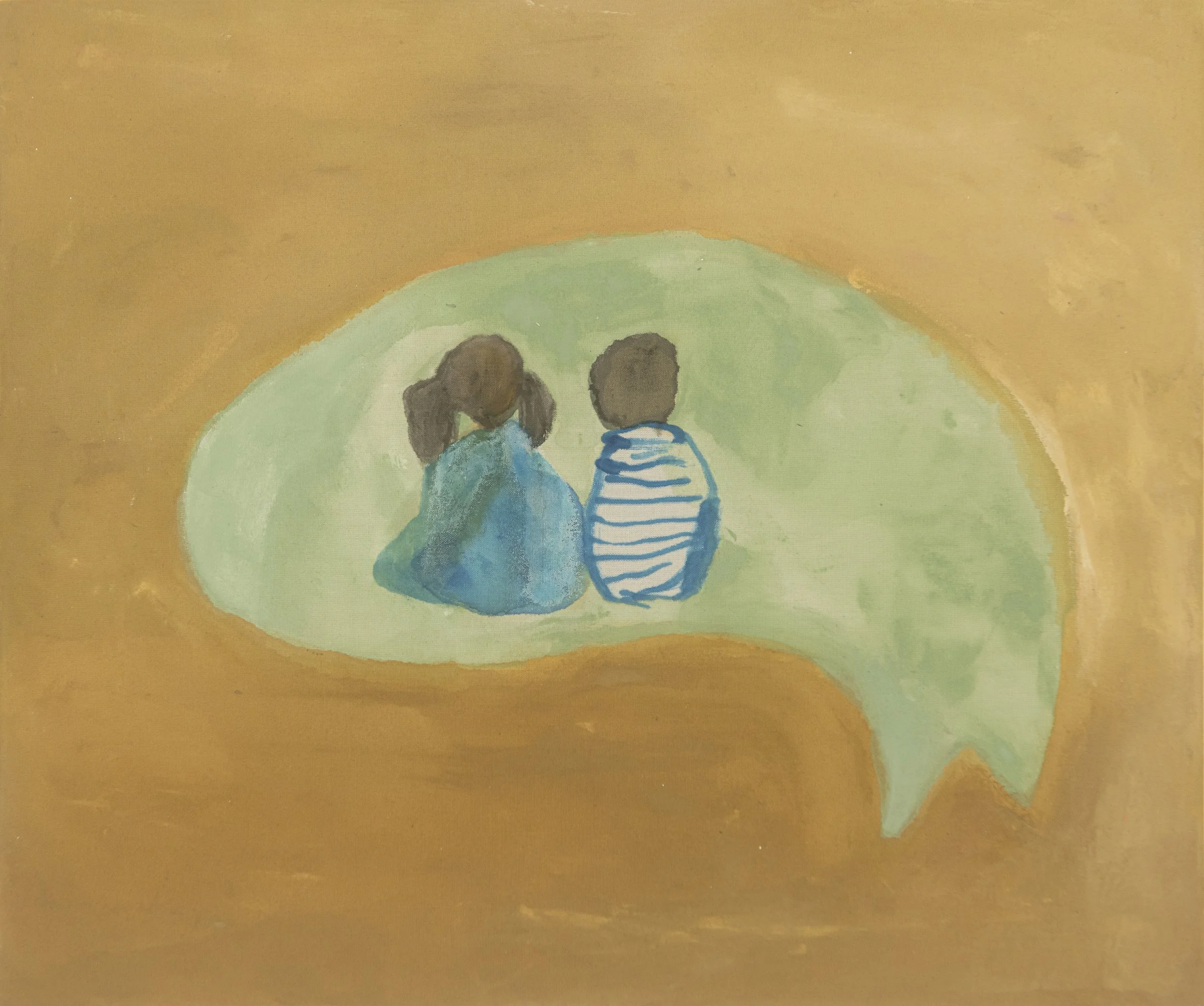Frog Rain
A solo exhibition of works at Canvas Gallery, Karachi, Pakistan, 2025
Photography by Humayun Memon
Three Way Slide
Acrylic on linen
58” x 72”
2025
Lishby drew a bird for me
Acrylic on linen
18” x 18”
2025
Of Waters, Frogs and Fish: on Sophia Balagamwala’s ‘Frog Rain’, an essay by Zarmene Shah accompanying the exhibition
Sophia Balagamwala’s Frog Rain, the work after which the exhibition is titled, was first made in 2024 as an animated video work. This is the form in which it was shown at the exhibition Manzar: Art and Architecture from Pakistan, 1940s to Today late in 2024 in Doha. Here, at Canvas Gallery in Karachi, it takes a different form: an installation comprised of an audio work, and accompanied by small drawings and foldable mattresses leaning against the walls and laid out in varying forms across the floor. Without the accompanying animation, the work transforms in its evocations and provocations, with the narrator’s voice summoning both a nostalgia, and an urgent signal to the present. While the work was not made keeping Pakistan’s most recent and devastating floods in mind, it is a timely and germane work to encounter within this immediate context.
“Do you remember when we were small and it used to rain frogs?” the narrator asks. “Sometimes we would catch them in our lunchboxes, but by the time we got home, they would have disappeared.”
We had big rains then and water would come into our house
We would make paper boats sail
We have big rains now too but they are different
The water is darker and angrier or is that us
The relevance of the latter is plain to see, as is Pakistan’s status as one of the countries most vulnerable to climate change, even as it is one of those that contribute to it the least. Coupled with consistent lack of planning and management, alongside unchecked development projects that have had no regard for environments, ecologies, drainage systems and safety protocols, each year, the devastating impacts of this combination of factors becomes increasingly visible
But what about the frogs? As someone who was born and grew up in Karachi, I too remember the frogs, and have had conversations in recent years about how rarely one encounters them anymore. They are one of many species of life that seem to have disappeared from the city. However, frogs (often overlooked and easily forgotten), play a crucial role in maintaining healthy ecosystems across the globe and are seen as important bioindicators, i.e. organisms that provide critical insights into the health of an ecosystem. In Karachi, their disappearance, resulting from habitat loss, toxic chemicals (pesticides, fertilizers), capital development projects that impact environmental conditions and ecologies, climate change and global warming (Watts, 2024), is an alarming, yet barely noticed omen.
Balagamwala’s practice consistently draws from historical events, archives, memory, children’s books and fiction, in works that range across the mediums of painting, animation, books and sculptures. Often, these works offer critiques on political and institutional structures, speaking to ideas of power and control. Frog Rain(the exhibition) however, feels different, speaking at once to ideas of childhood and memory, of longing and desire, and of a wistfulness for a simpler time. This nostalgic ache seems to find some solace in the familiar and unchanged forms and materials of children’s swings and slides at Hill Park, which Balagamwala frequented with her father, and where she now visits with her own children. Smaller works, fluidly painted in thin layers, map the benches, trees and bird life in the park. The images are drawn from memories, photographs, and family archives, and we understand that there are stories here that we may not be privy to (Lishby drew a bird for me, 2025).
Elsewhere, we see two small children, sitting inside the form of a fish at the beach. Are these Balagamwala’s own children? Does it matter? As Karachiites, the sand, the water, the sound of the waves, and the constant sea breeze are an integral part of life in the city, and have always been. Trips to the beach are like rituals performed by families and friends, stretching across generations. And yet, the beach too has changed, as has Karachi’s coastline. Development and infrastructural projects deemed necessary for the advancement of this megacity, have devastated its marine ecosystems, even as access to the coast continues to be restricted, further limiting any truly public spaces of rest and recreation available to residents.
In his 1968 essay ‘The Right to the City’, Henri Lefebvre refers to the city as a site of production, change and exchange, and within it of the rights of all urban dwellers to participate in shaping the city that they inhabit. Lefebvre speaks of “[…] the need for security and opening, the need for certainty and adventure, that of organization of work and play, the needs for the predictable and the unpredictable, of similarity and difference, of isolation and encounter, exchange and investments, of independence (even solitude) and communication, of immediate and long-term prospects.” In many ways, the body of work in Frog Rain does the same, even as it asks us to consider the many changes and shifts that have occurred only in the last several decades. While Balagamwala questions “How do we remember the natural and urban worlds from our childhoods?”, the work also clearly signals to the ways in which we imagine and dream our futures, asking us to consider these urgently, deeply and carefully.
Zarmeene Shah (August 2025)
Sand Man
Acrylic on linen
18” x 18”
2025
Fish in the sand
Acrylic on linen
10” x 12”
2025

